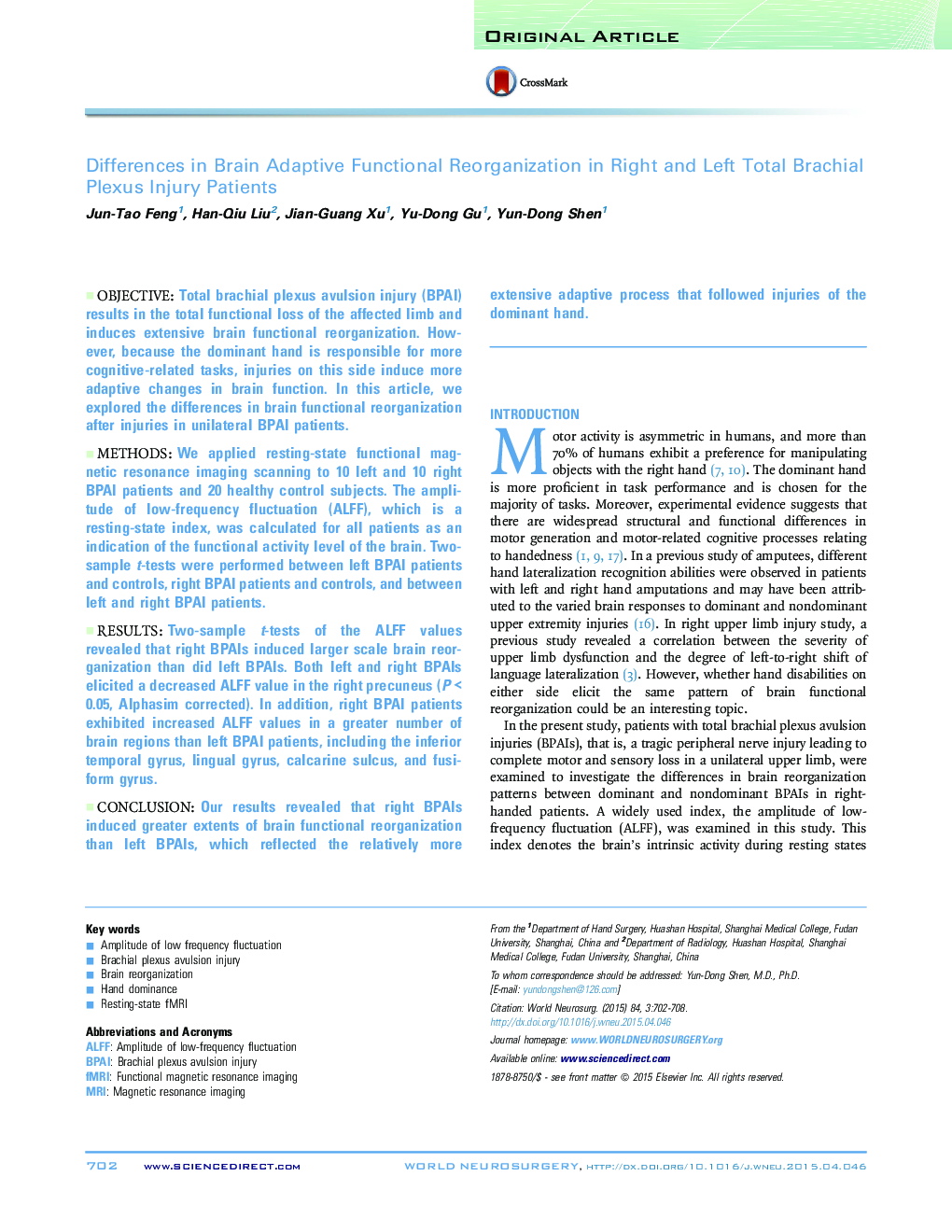| Article ID | Journal | Published Year | Pages | File Type |
|---|---|---|---|---|
| 6045379 | World Neurosurgery | 2015 | 7 Pages |
ObjectiveTotal brachial plexus avulsion injury (BPAI) results in the total functional loss of the affected limb and induces extensive brain functional reorganization. However, because the dominant hand is responsible for more cognitive-related tasks, injuries on this side induce more adaptive changes in brain function. In this article, we explored the differences in brain functional reorganization after injuries in unilateral BPAI patients.MethodsWe applied resting-state functional magnetic resonance imaging scanning to 10 left and 10 right BPAI patients and 20 healthy control subjects. The amplitude of low-frequency fluctuation (ALFF), which is a resting-state index, was calculated for all patients as an indication of the functional activity level of the brain. Two-sample t-tests were performed between left BPAI patients and controls, right BPAI patients and controls, and between left and right BPAI patients.ResultsTwo-sample t-tests of the ALFF values revealed that right BPAIs induced larger scale brain reorganization than did left BPAIs. Both left and right BPAIs elicited a decreased ALFF value in the right precuneus (P < 0.05, Alphasim corrected). In addition, right BPAI patients exhibited increased ALFF values in a greater number of brain regions than left BPAI patients, including the inferior temporal gyrus, lingual gyrus, calcarine sulcus, and fusiform gyrus.ConclusionOur results revealed that right BPAIs induced greater extents of brain functional reorganization than left BPAIs, which reflected the relatively more extensive adaptive process that followed injuries of the dominant hand.
